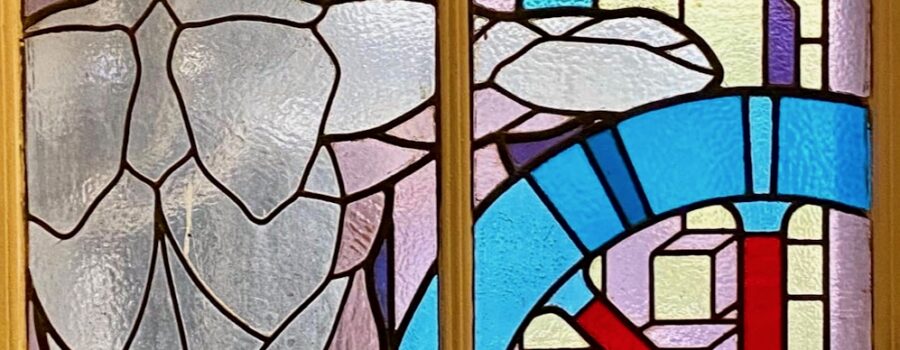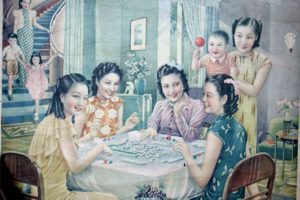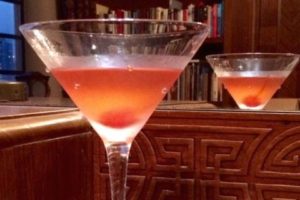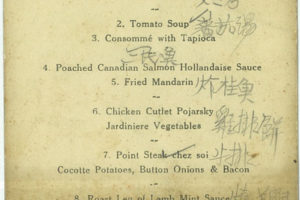Shanghai is one of the world’s great Art Deco cities, and this Sunday July 9, we’re going on a curated tour of the icons that made Shanghai Deco-famous. The landmarks alone are stunning, but what makes them truly special are the hidden Deco delights that you can find within. Some are easy to spot, others require deep infiltration. (Meaning that we’ll see some on our tour, but not all!)
Sunday July 9, 10am / Shanghai’s Art Deco Icons: A Tour / RMB 300 members, 400 nonmembers, bus + walking tour. TO REGISTER: Click here or email shanghaiartdeco@gmail.com
STAINED GLASS AT THE CATHAY

Victor Sassoon’s Bund landmark was a showstopper when it opened in 1929, and as the Fairmont Peace Hotel it’s a showstopper now, but the many renovations over the years have removed a great detail of original detail. Some fine examples of stained glass survive, though, tucked away in unexpected places.
Industry and Agriculture Window


On the left, “Industry”, and on the right, “Agriculture”. Between the two was another stained glass window, depicting the meeting of East and West. Sadly, that middle window is gone, but luckily, these two survive – perhaps because the subject matter and form were so strikingly similar to Socialist-Realist art?
Cathay Hotel Window
It hasn’t been the Cathay Hotel for more than 70 years, but you can still find evidence that it once was – complete with a stylized Art Deco greyhound, beloved by owner Sir Victor – for racing, and as pets.
Sassoon House Window
The Cathay Hotel took up part of Sassoon House, which included offices – and still does. One entrance to the offices reveals original details including this richly hued stained glass window, just behind the guard’s desk.
DECO IRONWORK AT THE SHANGHAI POWER COMPANY BUILDING

The Shanghai Power Company supplied electricity to 80 percent of pre-1949 Shanghai, and for their headquarters building on Nanjing Road, American architect Elliot Hazzard drew on the theme of power in his design details.
Sources of Power: Lightning & Sun Doors



Shanghai Power Company employees were greeted at their main entrance by an Art Deco rendering of a muscled worker extracting power from nature: on one side, from lightning and the other, from the sun.
The lightning bolt motif reappeared on the staircase, though taking the stairs may not have been a frequent occurrence, given that they had Otis elevators to whisk them from floor to floor!


THE LAST STAIRCASE AT THE PARK HOTEL
The brilliant Hungarian architect Laszlo Hudec created several landmark buildings in Shanghai, but perhaps none is as famous as the Park Hotel, his American Radiator-inspired skyscraper, which remained the tallest building in the city until 1983.
The Park once had glorious details throughout (see the terrazzo in the black-and-white photo below), but renovations in 1997 and 2001 removed most of the original features. Happily, though, they forgot one staircase!


Left: Original Park Hotel staircase ironwork, hidden behind a door today. Right: Original terrazzo, now gone, as is the ironwork above the door in the photo, which matches the staircase.
THE ROOFTOP AT THE ASTRID

The Astrid is so iconic that Tess Johnston and Deke Erh used its cartouche for the cover of their Art Deco book. The building is full of wonderful Deco details, like this exuberant tile.




But the real thrill is to get behind that famous cartouche, on the building’s rooftop, for a view over the still low-rise neighborhood, particularly the lane neighborhood just opposite, Joffre Terrace.
DECO DETAILS AT THE GREEN HOUSE
The brilliant Hungarian architect Laszlo Hudec created an Art Deco masterpiece with this house built for paint tycoon D.V. Woo (Wu Tongwen) and his heiress wife, who came from the wealthy Bei/Pei family. Her father, Bei Runsheng, had given them the land as a wedding gift. (The architect I.M. Pei is also a descendant). The exterior is stripped of ornamentation, but inside, the architect allowed himself the indulgence of some delicious design details, like the ironwork that covers the fan in the elevator ceiling.
Woo lived in the house with his wife and mistress, so presumably if they ended up in the elevator together, they could look up at the ceiling to prevent awkward interactions! The Deco designs show up in the ironwork in interior windows, and the floor heating grates as well. (And just look at that curve on the staircase!)


THE HIDDEN LOGO AT THE YWCA

For the Young Women’s Christian Association (YWCA) building, Chinese-American architect Poy Gum Lee designed a Chinese Art Deco beauty: a stepped back Deco building in form, with classical Chinese motifs on the exterior and interior decoration. The building is a rarity in that it still has so many of its original details, but what we love most is the tiny “Y” logo that the architect cleverly incorporated into the otherwise Chinese-inspired decoration surrounding the entrance.














Most Commented Posts